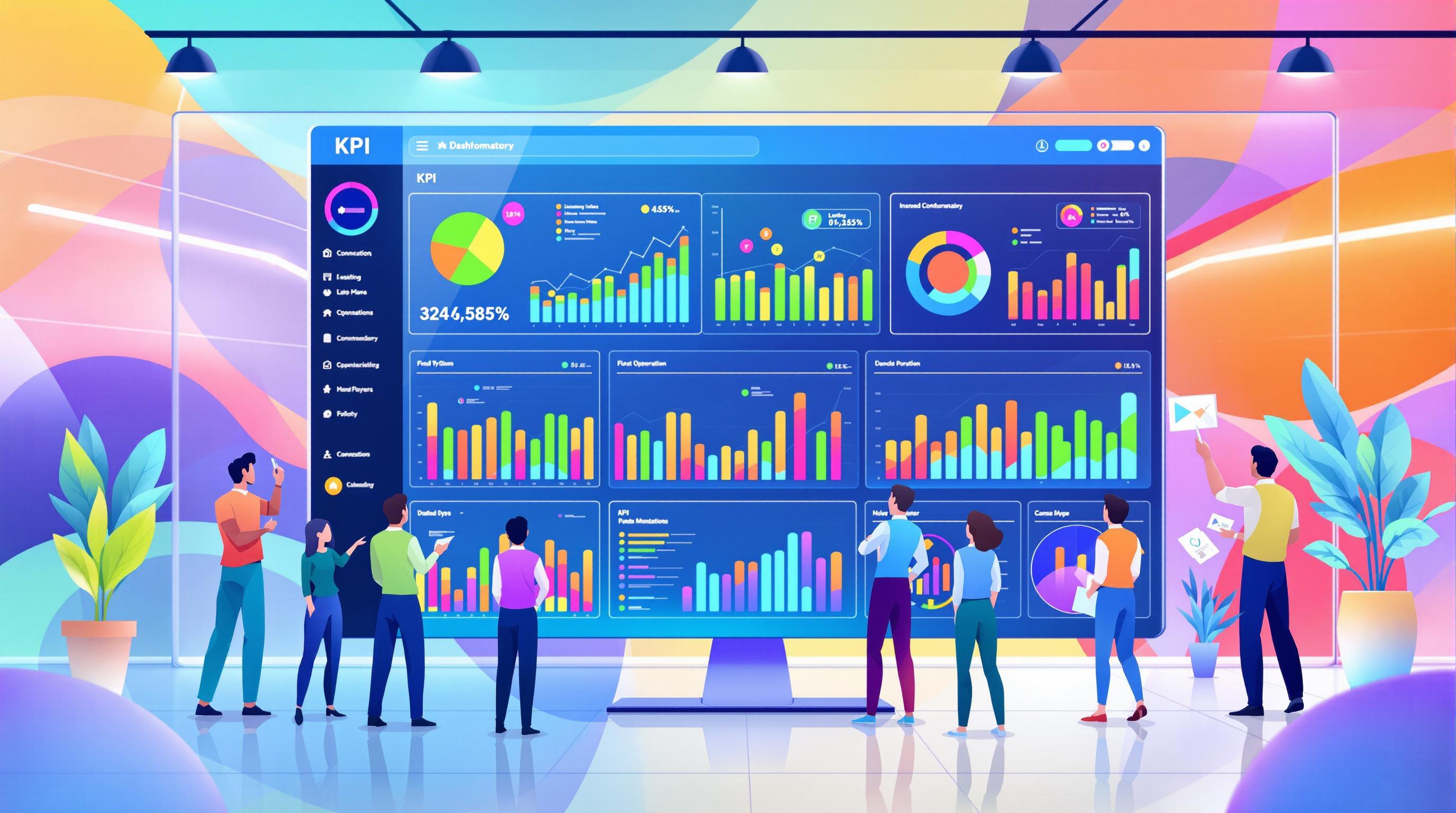
Back to Blogs
Building Secure, High-Performance AI Agents: Framework Selection, Data Governance, and Integration Patterns
Technology
Building Secure, High-Performance AI Agents: Framework Selection, Data Governance, and Integration Patterns
Building secure, high-performance AI agents requires focusing on three key areas: choosing the right frameworks, establishing strong data governance, and implementing effective integration patterns. Here's what you need to know:
- Framework Selection: Pick frameworks like TensorFlow, PyTorch, or Hugging Face based on security features, scalability, and use case (e.g., NLP, prototyping, or large-scale projects).
- Data Governance: Protect sensitive data with encryption, Zero-Trust Identity and Access Management (IAM), and compliance with regulations like GDPR and CCPA.
- Integration Patterns: Ensure seamless and secure integration with strategies like API-driven architecture, in-database machine learning, and non-human IAM governance.
Quick Comparison of AI Frameworks:
| Framework | Security Features | Performance Characteristics | Best Use Cases |
|---|---|---|---|
| TensorFlow | Differential privacy tools | Scalable for large projects | Enterprise AI needing compliance |
| PyTorch | Secure data processing | Fast prototyping | Research and adaptable AI projects |
| Hugging Face | Security in NLP-focused libraries | Optimized for NLP tasks | Natural language processing |
Related video from YouTube
Choosing the Best AI Framework for Security and Performance
Picking the right AI framework is key to creating secure, high-performing AI systems. The framework you choose impacts development speed, data protection, and how easily your solution integrates with other tools.
Comparison of Popular AI Frameworks
| Framework | Security Features | Performance Characteristics | Best Use Cases |
|---|---|---|---|
| TensorFlow | TensorFlow Privacy, differential privacy tools | Great for handling large-scale projects | Scalable enterprise AI needing compliance |
| PyTorch | PyTorch Privacy, secure data processing | Ideal for quick prototyping | Research and adaptable AI projects |
| Hugging Face | Strong security in Transformers library | Tailored for NLP tasks | Natural language processing applications |
Key Factors to Consider
When choosing an AI framework, focus on these essential elements:
Security and Scalability
Assess the framework's ability to handle privacy tools, process large datasets, and meet legal standards like GDPR and CCPA. TensorFlow, for example, works with tools such as Alation to ensure data lineage and regulatory compliance [3].
Community Support
Look for active user communities. TensorFlow and PyTorch both benefit from vibrant communities that offer updates, security fixes, and optimization tips.
Real-World Framework Applications
"Protecting sensitive data is critical - for maintaining customer trust, but also for meeting regulatory requirements." - Salesforce Blog, 2024 [2]
TensorFlow in Action
Google relies on TensorFlow for secure, large-scale AI projects, highlighting its scalability and compliance strengths [1].
PyTorch in Practice
NVIDIA uses PyTorch for developing AI in autonomous vehicles, showcasing its ability to handle complex and security-focused tasks [1].
The success of your AI initiative depends on matching your framework's strengths with your security and performance needs. For smaller companies, frameworks offering built-in security and scalability are often the best choice.
Once you've selected a framework, the next step is to establish strong data governance to protect and optimize your AI systems.
Setting Up Strong Data Governance for AI Systems
Effective data governance is critical for ensuring that AI systems run securely and efficiently. Without it, even the most advanced AI frameworks can face issues with security and performance.
Key Principles of Data Governance
To maintain the integrity of AI systems, it's important to focus on three main principles that address security, compliance, and data management:
| Principle | Description | Implementation Focus |
|---|---|---|
| Data Privacy & Security | Safeguard sensitive information and block unauthorized access | Encryption, Zero-Trust architecture, access controls |
| Compliance | Meet legal and regulatory requirements | GDPR, CCPA compliance |
| Lifecycle Management | Oversee data from creation to secure deletion | Automated monitoring and auditing |
Tools and Automation for Data Governance
Automation plays a big role in streamlining governance processes and reducing human errors. Tools like Salesforce Shield are designed to handle this efficiently. It includes features such as Event Monitoring for real-time security tracking, Platform Encryption to protect stored data, and Data Detect for automatically identifying sensitive information.
Tackling Compliance Challenges
Balancing regulatory compliance with system performance is a common hurdle. Here are two strategies to address this:
- Zero-Trust IAM and Monitoring: Implement Zero-Trust Identity and Access Management (IAM) alongside continuous monitoring to block unauthorized access and maintain compliance.
- Data Classification: Start by identifying and categorizing sensitive data. This allows you to apply the right security measures early, reducing vulnerabilities and helping meet data protection laws like GDPR and CCPA [2].
Creating Effective Integration Patterns for AI Systems
Integrating AI agents into enterprise environments takes careful planning and a solid implementation strategy. Ignoring integration challenges can lead to security vulnerabilities and performance issues, undermining the benefits of strong frameworks and data governance.
Challenges in AI Integration
AI integration often encounters obstacles in three main areas:
| Challenge | Impact | Solution Approach |
|---|---|---|
| Legacy System Compatibility | Older systems may struggle with modern AI requirements | Use middleware layers with API-driven integration |
| Real-time Data Access | Latency can reduce AI efficiency | Implement in-database machine learning |
| Security Maintenance | AI increases the system's attack surface | Adopt Zero-Trust architecture |
Overcoming these issues involves integration patterns that emphasize security, scalability, and performance.
Recommended Patterns for AI Integration
Using the right patterns can help organizations keep their AI systems secure, efficient, and scalable, even in complex setups.
1. API-Driven Architecture
APIs allow secure data exchange while keeping systems independent. This approach ensures controlled and monitored access points for seamless integration.
2. In-Database Machine Learning
Processing data directly within the database boosts performance and minimizes security risks. For example, Oracle Autonomous Database offers built-in machine learning tools that eliminate the need to move data externally [4].
3. Non-Human IAM Governance
Specialized identity and access management systems track and control AI actions, ensuring they stay within acceptable risk levels. Aembit's governance solutions highlight how organizations can maintain oversight while enabling automation [4].
Examples of Scalable and Secure Integration
Cloud-native AI deployment uses cloud infrastructure to achieve flexibility, scalability, and better security. Successful implementations often include:
- Event Monitoring to track security-related activities
- Platform Encryption to safeguard data
- Data Detect for identifying sensitive information automatically [2]
Dynamic load balancing ensures consistent AI performance during high traffic periods by evenly distributing workloads [5].
"Non-human governance tools are essential for monitoring AI agent actions and ensuring accountability, particularly in high-stakes decision-making scenarios" [4]
Real-time verification protocols can validate AI actions in line with zero-trust principles, ensuring every interaction is authenticated regardless of its origin [4].
Tips for Secure and Scalable AI Deployment
Deploying AI systems securely and effectively requires balancing cutting-edge technology with strong security measures. Organizations need to focus on both safeguarding their systems and maintaining performance for a smooth rollout.
Key Security Practices
To keep AI systems secure, certain practices are essential. These include using automated authentication tools, monitoring systems constantly, and enforcing strict data protection protocols. Together, these measures help block unauthorized access, detect threats early, and protect sensitive data - all while keeping systems running efficiently [2].
Ensuring Data Quality and Accuracy
The quality of your data is critical to both AI performance and security. Here are some best practices:
- Use automated tools to validate and scan data.
- Implement role-based access controls to limit who can access what.
- Maintain detailed audit trails to track data usage.
- Clearly assign data management responsibilities.
- Document processes thoroughly to avoid gaps [3].
Real-World Success Stories in AI Deployment
Organizations that succeed with AI often adopt a well-rounded security approach without stifling innovation. Many rely on automated governance tools to monitor AI behavior and ensure compliance with security standards [4].
"Strong data security has never been more important. Organizations need to protect sensitive data, ensure compliance, and secure their AI workflows." - Salesforce Blog, "Paving a Secure Path for AI" [2]
Successful AI deployments often include a mix of:
- Real-time monitoring to spot and address issues immediately.
- Advanced data protection measures to guard against breaches.
- Automated tools for verifying compliance with regulations.
- Scalable infrastructure that can grow with the organization's needs.
Conclusion: Summary and Future Trends
The development of AI agents is advancing quickly, with security and performance remaining top priorities. Many organizations are adopting zero-trust strategies, which include continuous verification and limiting permissions to minimize potential vulnerabilities [4].
Effective data governance has become essential for secure AI systems. Automated tools are increasingly used to monitor and protect data. As Dr. Fei-Fei Li notes:
"AI development requires iterative testing and optimization to ensure efficiency and adaptability across scenarios." [5]
Looking ahead, several trends are shaping the direction of secure AI development:
| Trend | Impact | Key Focus Areas |
|---|---|---|
| Non-human IAM Evolution | Improved security | Automated management and monitoring |
| AI-Powered Governance | Better compliance | Data tracking and access control |
| Zero-trust Principles | Lower risk of breaches | Real-time checks and restricted permissions |
Organizations should approach these trends with phased implementation and regular assessments. As AI grows more integrated into operations, staying vigilant and flexible will be crucial for success in an increasingly automated world.
The rise of non-human identity management and AI-driven governance highlights the need for strong data governance strategies and secure integration practices. As AI agents handle more sensitive tasks, their complexity makes them attractive targets for cyber threats [4].
Integrating identity management for non-human systems and strengthening governance will be essential for ensuring secure and efficient operations. As AI systems evolve, the focus on transparency, accountability, and automated security will become even more critical [4]. By combining secure frameworks, strong governance, and seamless integration, organizations can create AI agents that excel in performance while standing resilient against future challenges.
Related Blogs

Technology
15 Jan 2025
How to Build a KPI Dashboard for Operations
Learn how to create an effective KPI dashboard to streamline operations, improve decision-making, and enhance team performance.

Technology
15 Jan 2025
Top 7 Best Practices for Cloud Security Alerts
Explore essential best practices for optimizing cloud security alerts, enhancing threat detection, and ensuring compliance.

Technology
15 Jan 2025
A Step-by-Step Approach to Automate Workflows with Cloud AI
Learn how to automate workflows using Cloud AI to improve efficiency, reduce errors, and enhance decision-making in your business.